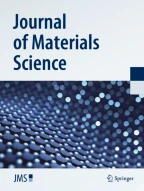Abstract
An AA5083 aluminum alloy plate and an SS41 steel plate were cladded by an explosive welding method using an AA1050 aluminum alloy interlayer plate. The effects of the interlayer thickness on the interface morphology and the shear deformation behavior of the cladded plates were studied. The interfacial zone was composed of an intermetallic compound, FeAl3, formed by the AA1050 interlayer. The intermetallic compound acted as a crack source at the AA1050/SS41 interface, and the thickness and morphology of the interfacial zone were depended on the thickness of the AA1050 interlayer. In a shear deformation test, the crack propagation behavior varied according to the morphologies of the interfacial zone, and the shear strength of the cladded plates decreased with the interlayer thickness.
Similar content being viewed by others
Explore related subjects
Discover the latest articles, news and stories from top researchers in related subjects.References
S. J. Kim, S. H. Paik and M. Y. Huh, J. of the Korean Inst. of Met. and Mater. 32 (1994) 1558.
D. G. Brasher and D. J. Butler, Advanced Materials and Processes 3 (1995) 37.
M. Nishida, A. Chiba, Y. Honda, J. Hirazumi and K. Horikiri, ISIJ International 35 (1995) 217.
S. Yano, H. Matsui and S. Morozumi, J. Mater. Sci. 33 (1998) 4857.
D. Jaramillov, O. T. Inal and A. Szecket, ibid. 22 (1987) 3143.
E. S. Ege, O. T. Inal and C. A. Zimmerly, ibid. 33 (1998) 5327.
K. Hokamoto, T. Izuma and M. Fujita, Metal. Trans. 24A (1993) 2289.
Author information
Authors and Affiliations
Rights and permissions
About this article
Cite this article
Han, J.H., Ahn, J.P. & Shin, M.C. Effect of interlayer thickness on shear deformation behavior of AA5083 aluminum alloy/SS41 steel plates manufactured by explosive welding. Journal of Materials Science 38, 13–18 (2003). https://doi.org/10.1023/A:1021197328946
Issue Date:
DOI: https://doi.org/10.1023/A:1021197328946
